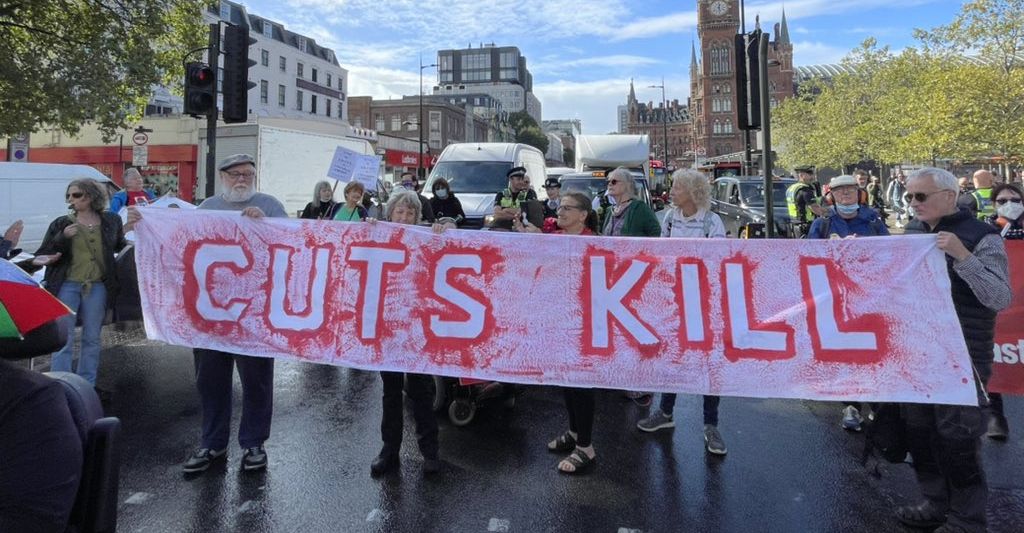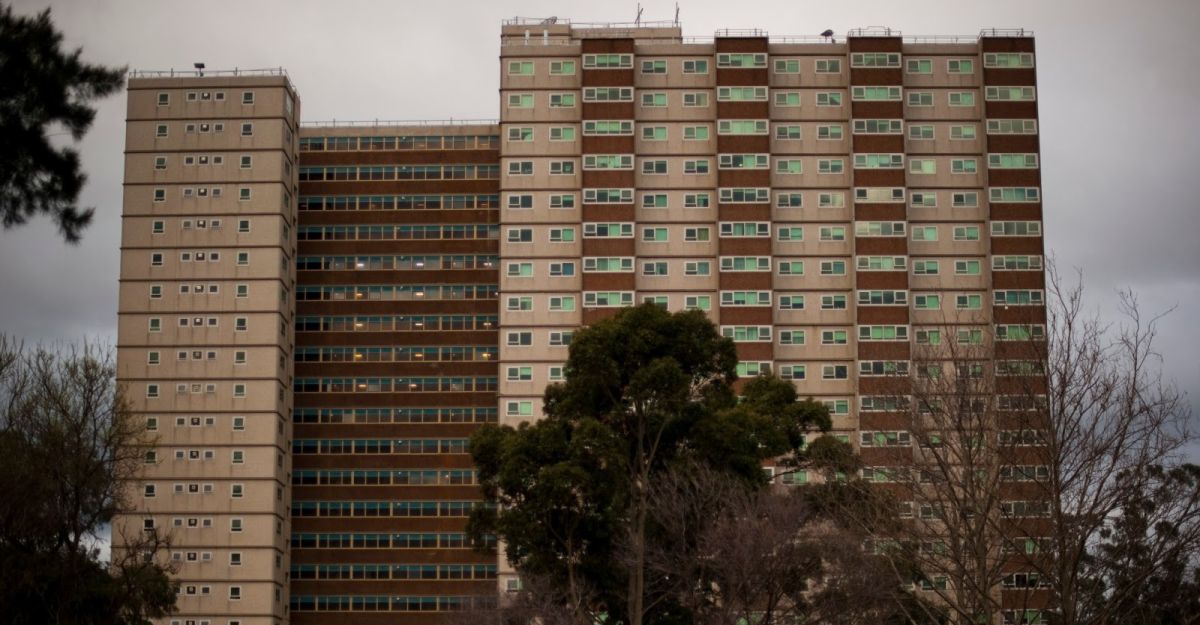Picture, for a minute, every artwork of colonial New Zealand you can think of. Colourful landscapes of potential, dotted with structures and chimney smoke that exude settlement. Towns surrounded by rolling hills covered in virgin forest or recently-cleared bush. Towns painted in hues of blue, green, gold and white, dotted with a splash of settlers, a well-placed ‘native’ and a backdrop of churches, flagstaffs and ship’s masts.
Now add a chain gang. Hard labour men guarded by other men with guns. Men moving heavy metal. Men picking at the earth. Over and over again.
This was the reality of the nineteenth century city in New Zealand.
It’s a vision that doesn’t gel easily with normative accounts of New Zealand’s past. However, while researching the hidden history of prison labour, I’ve come to realise that New Zealand labour history has a blind spot when it comes to prisoners. Minus one or two books on prisons written by social historians, the prison gang as a working-class formation is largely missing from the ranks of labour and its histories.
Capitalism has done a tremendous job at portraying itself and its imperatives as natural and entirely normal. It has also normalised prisons. If most of us struggle to imagine a world without prisons, then it’s not surprising that the work of prisoners has been taken for granted in most big-picture accounts of New Zealand history and treated as unimportant or marginal. Throw in a little exceptionalism and the lack of teaching history in schools—especially its darker and more uncomfortable aspects—and you find yourself looking at a skewed picture of the past.
Yet the line between free and unfree, waged and unwaged, is blurry at best.
As Jairus Banaji argues in ‘The Fictions of Free Labour’, all wage labour is subject to coercion, such as having to sell one’s labour to survive or doing what the boss says to get paid. This coercion springs from the property relations of capitalism, ‘a set of legal rights, privileges and powers that place one person in a position to force another person to choose between labour and some more disagreeable alternative.’
So-called ‘free’ and forced labour don’t exist in separate worlds, argues the historian Robert Steinfeld: ‘It is more accurate to think about labour relations in terms of degrees of coercive pressure that can be brought to bear to elicit labour.’ Workers of all stripes could withhold their labour—be it on a ship, a shop or in prison, and faced economic and extra-economic punishment if they did. The consequences may have been harsher for prisoners, but that doesn’t mean free labour was voluntary or free of consequence. Both involved a choice between disagreeable alternatives, and both were pervasively shaped by law.
These choices were (and are) also profoundly shaped by gender. The creation of hierarchies built upon gender helps to mobilise certain bodies for certain roles within capitalism. Transforming bodies into cheap nature needed ‘force and fear and social policing’, and prisons played their part in the battle against the rebel body.
From the enclosure of the commons in the sixteenth century onwards, domestic labour was radically redefined. Increasingly excluded from the wage, the work of caring and nurturing human life was feminised, devalued and cheapened to the point where it became seen as a natural resource available to all, especially men. As Silvia Federici has shown in works like Caliban and The Witch and The Patriarchy of the Wage, women’s bodies became the new commons, and women’s work became non-work.
Yet unpaid labour makes the whole system of waged work possible. ‘Without unpaid work, especially care work’ writes Raj Patel and Jason Moore in A History of the World in Seven Cheap Things, ‘wage work would simply be too expensive.’ Gender cannot be separated from class, just as ‘free’ and waged work can’t be seen in isolation from unfree and unwaged work.
If capitalist work boils down to a choice between lesser evils, where do we draw the line through a continuum of coercive pressures? And why draw a line at all when doing so ‘obliterates a great deal of capitalist history’, such as how capitalism uses unpaid labour, extra-economic coercion and violence to reproduce itself?
Perhaps this is the reason why prisoners-as-workers hardly feature in New Zealand labour histories. It’s as if they cease to be workers behind bars—as if a dividing line has been drawn along the prison’s stone walls.
Yet prisoners were overwhelmingly working class—seamen, soldiers, sex workers and more who found themselves swept up by the mobilising forces of dispossession and coercion. ‘The carceral machine feeds off the production of the poor and depends on both’, writes Ann Laura Stoler. ‘Convict labour depends on the availability of a population whose reproduction is neither assured nor required.’ Contrary to French philosopher Michel Foucault’s idea of a ‘Great Confinement’, modern prisons and their predecessors didn’t just confine the poor: they mobilised them to offer their labour power for sale on the market. As Marc Neocleous writes in The Fabrication of Social Order, their ‘mobilizing work was the mobilization of work.’
In his acclaimed book Making Peoples, historian James Belich writes about the floating crews of workers who were essential to colonisation and its progress industry. These were the seamen, soldiers, navvies, sawyers and bushmen, goldminers, flax millers, shearers and other farmhands whose work in gangs literally made New Zealand.
But we need to add another crew of workers to that list—the chain gang.
With their working-class backgrounds, gang-based labour and experience of precarity, mobility and coercion, prison gangs need to be included in the ranks of labour and its histories. Prisoners weren’t just of the working class but were an important working-class formation. They were like other pools of prefabricated labour in New Zealand’s long nineteenth century, workers who shared similar experiences, rituals and subcultures.
Putting prisoners and their unfree labour back into the historical picture not only tells a more realistic story of the past. It also tells us a lot about capital accumulation and its reproduction through related forms of labour—free and unfree, waged and unwaged. As the authors of Global Convict Labour write, carceral work is ‘part of an integrated labour market, that is, in dialectic with other labour relations and their mutual combinations.’ It may be a cliché, but it is true: no-one is free until everyone is free.
Image: painting by Christopher Aubrey of Bell Hill, Dunedin. Toitū Otago Settlers Museum. Permission of Toitū Otago Settlers Museum must be obtained before any re-use of this image.







